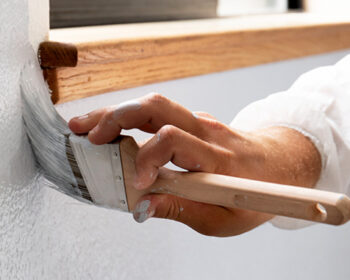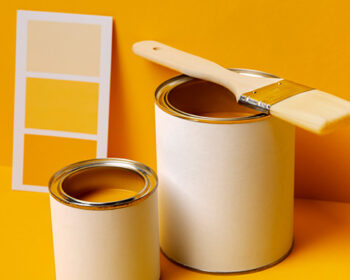
Have You Heard About Self-Cleaning Paint?
Technology has improved so much in recent years that self-cleaning products are now available. You may be familiar with self-cleaning ovens and litter boxes. Have you heard of self-cleaning paints, though?
Our Melbourne based house painter will tell you everything you need to know about it in this article. So, please continue reading!
What is It?
What exactly is self-cleaning paint? The science behind self-cleaning paint was developed by researchers at the Singapore Institute of Manufacturing Technology, which is a division of the Agency for Science, Technology, and Research.
Nanoparticles of titanium dioxide are one of its components. Any organic materials on the painted surface break down due to the oxidative qualities of the paint when it is exposed to sunlight or another ultraviolet light source.
Self-cleaning paint deters oil as well as water. Self-cleaning paint is valuable for people who want to maintain their maintenance schedule as minimal as possible because it fits difficult-to-reach and difficult-to-clean areas.
Does it actually work?
Yes, it does function. Numerous YouTube videos that show different “Self-Clean” products in action will let you see for yourself. Even Nissan, a well-known automaker, has been testing a “Self-Clean” auto-paint with amazing results.
What’s the origin of self-cleaning?
‘Self-clean’ was initially identified in the 1960s when the self-cleaning characteristics of particular plants and insects were examined. It is based on some of nature’s most beautiful events. Since then, researchers have made considerable progress in simulating the phenomenon using synthetic materials. Be sure not to fall behind because the future is already here.
How Does It Function?
Self-cleaning paints, according to SAS Europe, produce a surface that is microscopically textured and has a contact angle of 140 degrees. As a result, the surface becomes extremely hydrophobic, causing water to bead up and flow across the facade like pearls of water. As the water beads flow over the surface, they catch the dirt and other debris that falls to the ground. As a result, the surface is cleaned effectively by getting rid of dirt and other debris.
The Great Western Hotel is a 19th-century landmark in Exeter (masonry paint case study). The owners decided to finish it since it needed to be restored to its previous brilliance. Because it is located in a high-traffic region along the main south-west rail link, the light colour chosen may have been a concern, resulting in expensive maintenance expenses to keep the great facade clean. It stays white and spotless with self-cleaning paint and washes clean in the rain.
Why use it?
In comparison to other standard paints and finishes, self-clean paint technology promises a significantly reduced maintenance schedule. Imagine high-rise buildings and difficult-to-reach rendered areas remaining crisp and clean for years after construction. A silicone paint’s greater flexibility and durability, which can last up to 15 years, is another advantage.
Other characteristics and advantages are as follows:
- Self-priming paint formulation speeds up the painting process.
- It has a formula that works well on the majority of exterior surfaces, such as wood, brick, and concrete.





